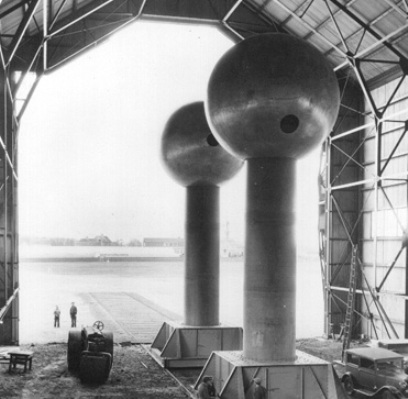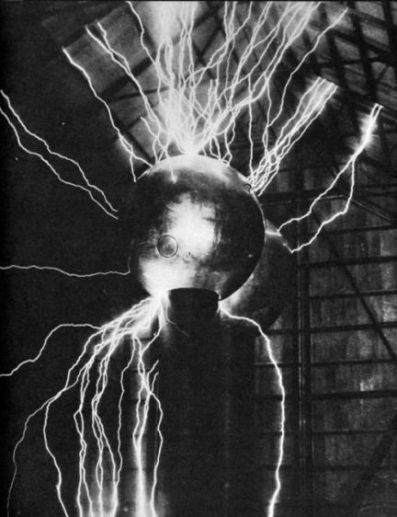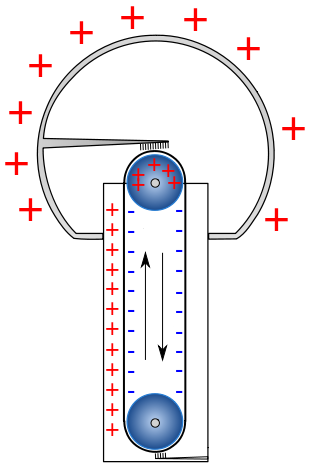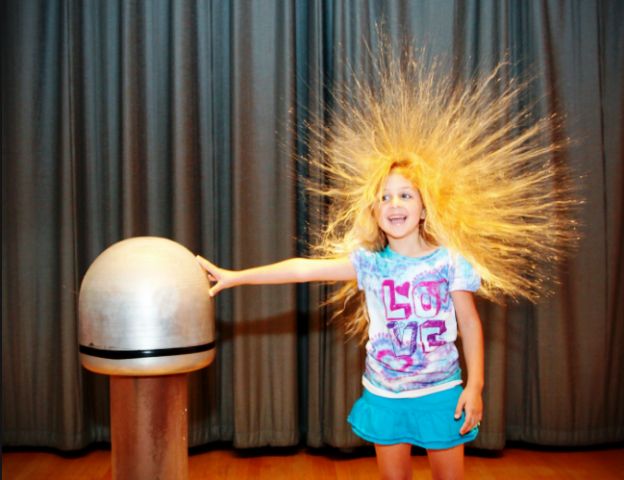Categories: Featured Articles » Interesting Facts
Number of views: 7772
Comments on the article: 1
Generator Van de Graaff
In the early 1930s, Dr. Robert Van de Graaf, who at that time worked as a research fellow at the Massachusetts Institute of Technology and was engaged in scientific research in the field of nuclear physics and accelerator technology, developed, designed and soon built a high-voltage electrostatic accelerator operating on the principle of an electrified air ions conveyor belt (1933).
Later, in 1936, Van de Graaff built (all on the same principle) the world's largest electrostatic constant voltage generator - the Van de Graaff tandem generator, consisting of two high towers.

Newspapers of that time called the invention of the associate professor nothing more than revolutionary, predicted him to "perform miracles" and "discover the secrets of nature." Such a strong stir in the press is not at all surprising, because the largest two-stage van de Graaff generator consisted of two huge columns with a diameter of almost 2 meters each and a height of about 15 meters (with metal spheres 4.5 meters in diameter mounted on top of the columns, inside which was mechanically supplied with an electric charge) and made it possible to obtain a potential difference of 7,000,000 volts.
Despite the low efficiency of the device as a whole (about 23%), people who saw a wonderful device at work had an indelible impression, because spark discharges were more than a meter long.

The power of the Van de Graaff generator was enough for real research work - to accelerate atomic nuclei, as well as elementary particles, such as protons and electrons, to sufficiently high speeds. So the Van de Graaff generator, used in accelerators, helped scientists identify the constituent parts of atoms, which are the structure of the physical universe.
They say that the idea of the principle of operation of a high-voltage generator came to Van de Grauf when he was still a student and watched the sparks of static electricity from time to time running on a working printing press.
The principle of operation of the generator is as follows. Silk or rubber tape (dielectric tape) is stretched and rotates like a conveyor belt on a pair of rollers, one of which is at the base of the column, the second inside the cavity of the conducting sphere at the top. The lower roller is made of metal and galvanically connected to the ground, it is driven by a motor. The upper roller is dielectric.
A metal brush connected to the positive terminal of the high voltage source, the negative terminal of which is connected directly to the lower roller, is brought to the tape below, under the lower roller, with a small gap.

So, between the lower roller and the brush, a dielectric tape moves (in a real generator, the tape had a width of about 120 cm). Under the action of a high voltage (about 20,000 volts) between the roller and the brush, the air between them is ionized and positive air ions, drawn by the Coulomb force, rush to the negatively charged roller. But since there is a dielectric tape in the path of the ions, the ions settle on the tape, charging it in this way.
The tape moves from bottom to top, below it continuously receives a charge, at the same time the charge from its surface is continuously taken near the upper roller, since the upper roller inside the sphere also has a brush located next to it. The brush removes the charge from the tape, and being galvanically connected to the inner surface of the hollow conducting sphere, transfers the charge to it, more and more electrifying this spherical container over its entire outer surface, essentially pumping it, pumping charge into it.

The fundamental possibility of charge accumulation in the capacity of the sphere of the van de Graaff generator is limited by the corona discharge, which inevitably arises due to ionization of the air surrounding the sphere. The theoretical limit for a sphere with a diameter of 4.5 meters is approximately 17,000,000 volts.

American scientist James Staki and volunteer Judy Creden demonstrate the ability of the human body to conduct electric current. Lecture in New York, 1966
See also at e.imadeself.com
:
